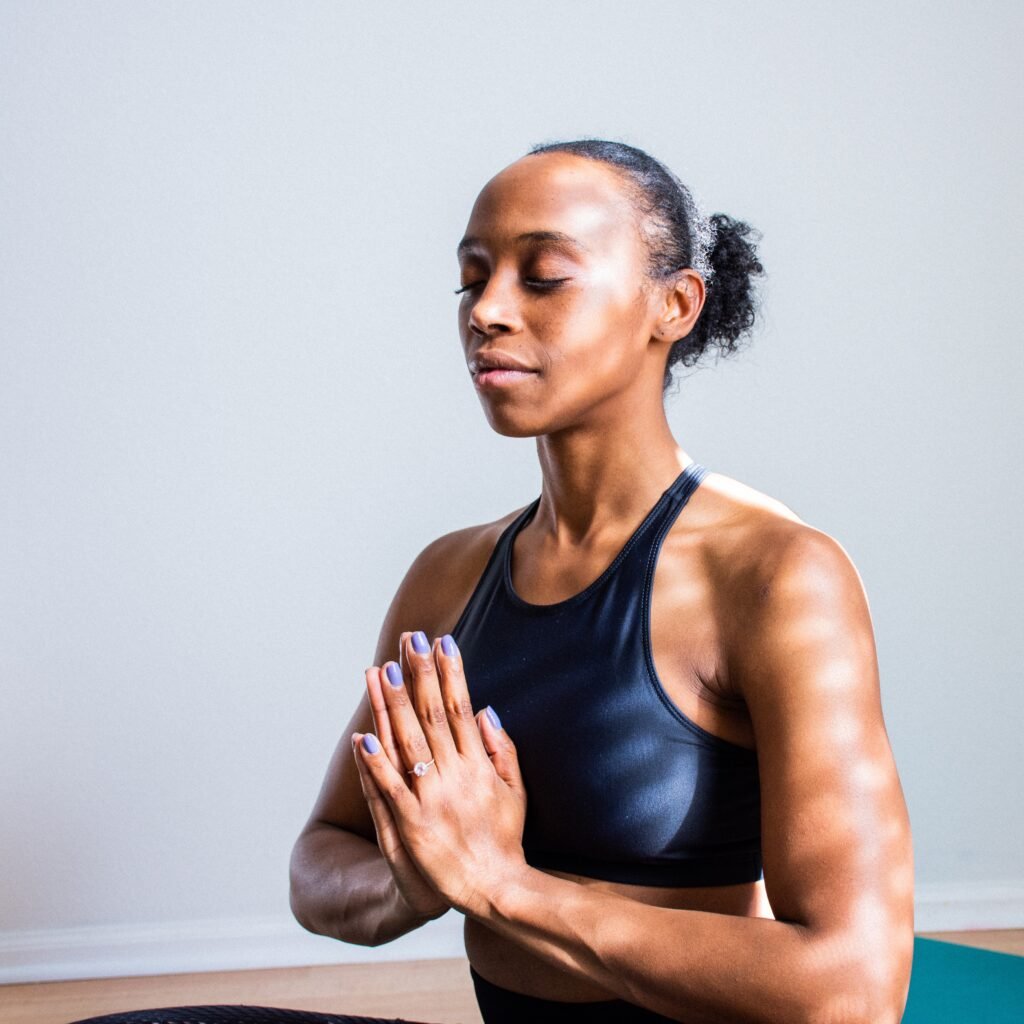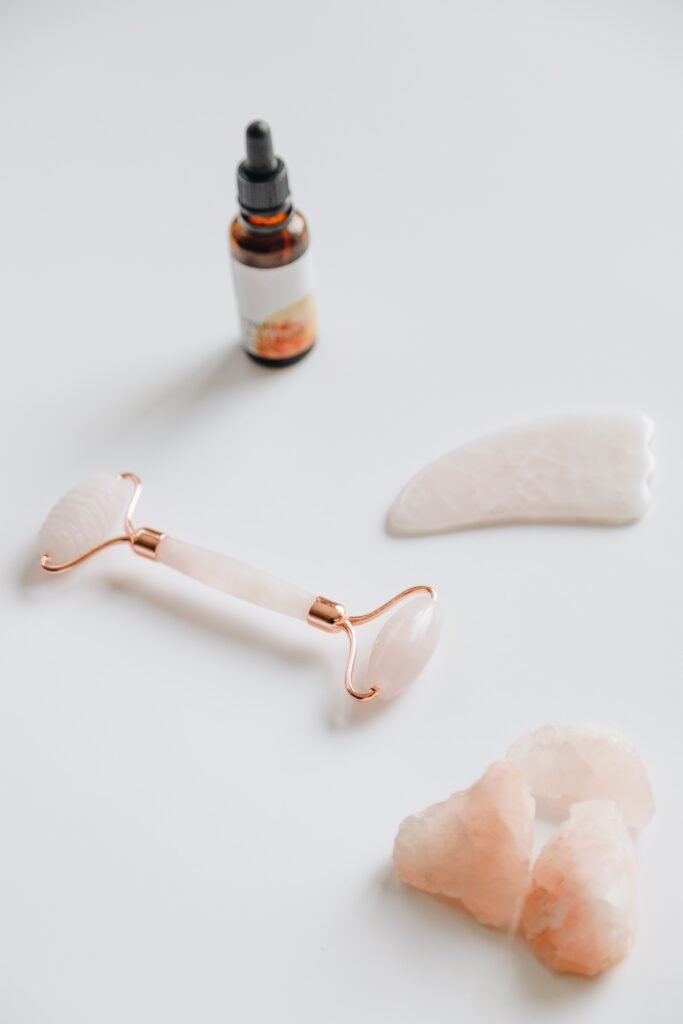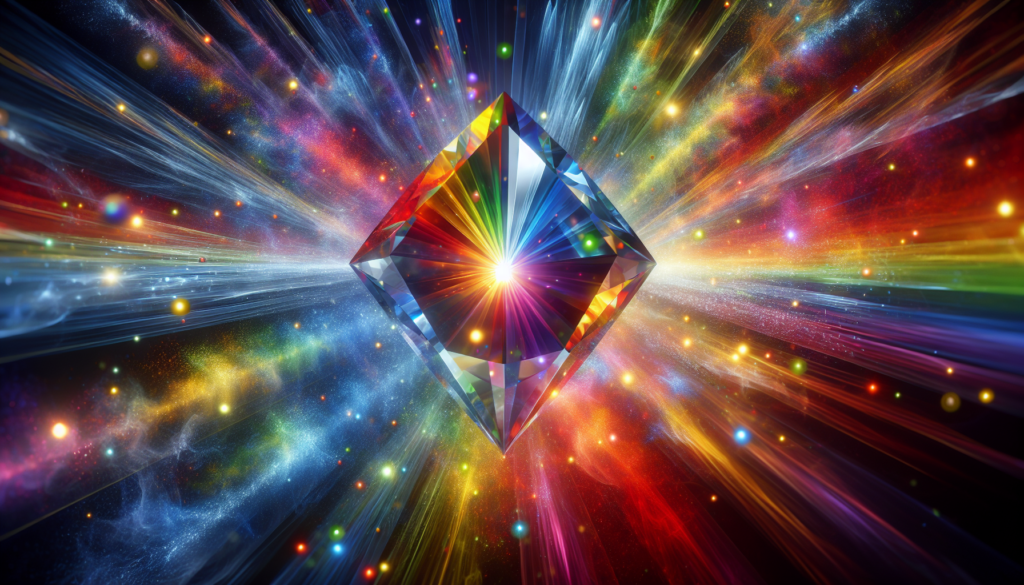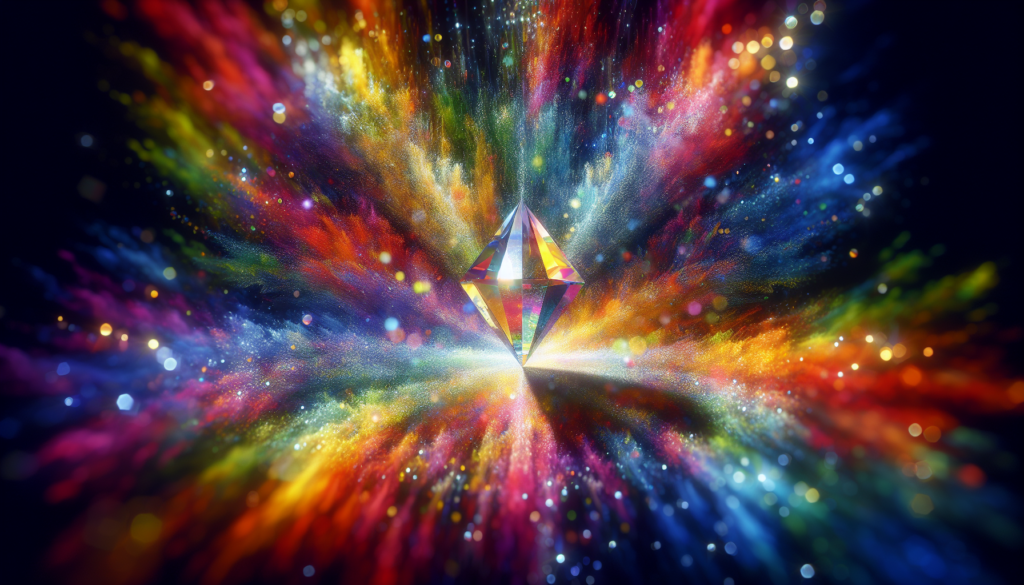Ever wondered how color therapy works and what benefits it can offer to your well-being? Delving into the world of color therapy can open up a plethora of possibilities for enhancing your physical and emotional health. By understanding the intricate relationship between colors and our mind, body, and spirit, color therapy offers a holistic approach to healing and balancing our energies. From relieving stress and anxiety to promoting creativity and productivity, discover the transformative power of color in this fascinating article.
Understanding Color Therapy
Definition of color therapy
Color therapy, also known as chromotherapy, is a holistic healing modality that utilizes different colors to promote physical, mental, and emotional well-being. It is based on the belief that specific colors have the power to influence our body, mind, and spirit, and restore balance and harmony within us. By exposing ourselves to certain colors or incorporating them into our environment, we can stimulate our energy centers, release blocked emotions, and promote healing.
Origins of color therapy
Color therapy has ancient roots and has been practiced by various cultures throughout history. Dating back to ancient Egypt, color therapies were used in temples to restore health and balance. Ancient Chinese medicine also recognized the importance of color in healing, incorporating it in acupuncture and herbal medicine. In the 19th century, Dr. Edwin Babbitt developed the modern concept of color therapy and published the influential book “The Principles of Light and Color.” Since then, color therapy has gained attention and popularity in the field of alternative and complementary medicine.
Principles and concepts
At the core of color therapy lies the understanding that each color carries its own unique energy and vibrational frequency. Different colors correspond to different energy centers within our body, known as chakras. By applying specific colors to the body or surrounding ourselves with them, we can influence these energy centers and restore their balance. Color therapy acknowledges the interconnectedness of our physical, emotional, mental, and spiritual aspects, and seeks to harmonize them through the power of color.
Role of color in human psychology
Colors play a significant role in human psychology, affecting our emotions, thoughts, and behavior. Each color has its own psychological impact and can evoke specific emotions and associations. For example, red is often associated with passion and energy, while blue is calming and associated with peace. Color psychology explores the psychological, cultural, and symbolic meanings of different colors and their impact on human perception. Understanding the psychological effects of color is crucial in color therapy, as it helps identify which colors are most beneficial for specific individuals and conditions.
Different types of color therapy
Color therapy encompasses various techniques and approaches, each with its own focus and methods. Some popular types of color therapy include color visualization, where individuals imagine themselves surrounded by specific colors, color meditation, where one meditates on a chosen color, and color light therapy, where colored lights are used to directly stimulate the body. Some practitioners also incorporate gemstones and crystals into their color therapy practices, as these stones are believed to carry the energetic properties of specific colors.
Effects of Colors on Emotions
Colors and their associated emotions
Colors have the power to elicit deep emotional responses within us. The following are some commonly associated emotions with different colors:
- Red: Passion, power, and excitement
- Orange: Creativity, enthusiasm, and warmth
- Yellow: Joy, optimism, and clarity
- Green: Harmony, balance, and growth
- Blue: Serenity, calmness, and peace
- Purple: Spirituality, intuition, and transformation
- Pink: Love, compassion, and nurturing
- White: Purity, clarity, and innocence
- Black: Mystery, depth, and strength
Psychology behind color perception
The way we perceive colors is influenced by various psychological factors. Our past experiences, cultural upbringing, and personal preferences can all shape our perception of colors. Additionally, certain colors may evoke different emotions and associations based on individual differences. However, there are also universal psychological associations with colors that are deeply ingrained in our collective consciousness. Understanding these associations helps color therapists guide individuals towards the colors that can best support their emotional well-being.
Color symbolism in different cultures
Colors hold significant symbolic meanings in different cultures and societies. For example, in Western cultures, white is associated with purity and weddings, while in some Asian cultures, it symbolizes mourning and death. Red is often associated with good luck and prosperity in Chinese culture, while black is the color of mourning in many Western cultures. These cultural associations can further influence how individuals perceive and respond to colors, adding depth and complexity to color therapy practices.
Empirical evidence of color-emotion relationship
While color therapy relies on anecdotal evidence and individual experiences, there is also a growing body of empirical research exploring the relationship between colors and emotions. Studies have shown that different colors can indeed have measurable impacts on our mood, arousal levels, and emotional states. For example, research has found that exposure to warm colors like red and orange can increase arousal levels and stimulate feelings of excitement, while cool colors like blue and green promote relaxation and create a sense of calm. This empirical evidence further supports the use of color therapy in promoting emotional well-being.

Mechanisms of Color Therapy
Impact of color on the subconscious mind
One of the key mechanisms of color therapy lies in its ability to influence the subconscious mind. Colors have a direct impact on our subconscious, bypassing conscious thoughts and triggering emotional and physiological responses. By working on the subconscious level, color therapy can address deep-seated emotions, patterns, and beliefs that may be contributing to imbalances in our well-being.
Stimulating specific chakras or energy centers
Color therapy recognizes the importance of balancing and aligning the body’s energy centers, known as chakras. Each chakra is associated with a specific color, and by exposing ourselves to the corresponding color, we can stimulate and activate these energy centers. For example, the root chakra is connected to the color red and is associated with grounding and stability, while the heart chakra is associated with the color green and represents love and compassion. By working with the appropriate colors, color therapy aims to restore the flow of energy within the body and promote overall well-being.
Color vibrations and their influence on the body
Colors are not only visible to the eye, but they also carry vibrational frequencies that affect our energetic and physical bodies. Each color vibrates at a specific frequency, and these vibrations can have a profound impact on our cells, tissues, and organs. Color therapy utilizes the vibrational qualities of colors to stimulate and balance our energetic and physical body, facilitating healing and promoting overall wellness.
The power of visualization and color meditation
Visualization and color meditation are powerful techniques used in color therapy. Through visualization, individuals imagine themselves surrounded by specific colors, allowing the mind to tap into the therapeutic effects of those colors. Color meditation involves focusing on a particular color, either by visualizing it or using physical objects, and allowing its healing energy to flow through the body. These techniques can deepen the connection between the individual and the color, enhancing the therapeutic benefits of color therapy.
Benefits of Color Therapy
Improvement in mood and emotional well-being
One of the primary benefits of color therapy is its ability to uplift mood and enhance emotional well-being. By incorporating specific colors into our environment or exposing ourselves to them intentionally, we can stimulate positive emotions and release stagnant or negative energy. Color therapy offers a non-invasive and enjoyable way to improve overall mood, promote a positive mindset, and support emotional healing.
Reducing stress and anxiety
Colors have a profound impact on our nervous system and can help reduce stress and anxiety. Soft, calming colors like blue and green can activate the parasympathetic nervous system, promoting relaxation and lowering stress levels. On the other hand, warm and vibrant colors like yellow and orange can invigorate and energize, helping to combat fatigue and anxiety. By using color therapy techniques, individuals can find relief from the pressures of daily life and restore a sense of calm and balance.
Enhancing creativity and productivity
Color therapy has been shown to enhance creativity and increase productivity. Different colors stimulate different parts of the brain, influencing our cognitive processes and mental abilities. For example, blue is believed to enhance focus and productivity, making it an ideal choice for workspaces. Colors like orange and yellow can stimulate creativity and innovation, making them beneficial for artistic and brainstorming activities. By utilizing the power of color, individuals can tap into their innate creative potential and optimize their productivity.
Strengthening the immune system
Color therapy can also have a positive impact on our physical health by strengthening the immune system. Colors, with their vibrational qualities, can stimulate the body’s natural healing mechanisms and promote balance within the body. By working on a deep energetic level, color therapy can optimize the functioning of our immune system, supporting overall health and well-being.
Promoting physical and mental healing
Color therapy has been used to promote physical and mental healing in various conditions. From chronic pain management to respiratory disorders, color therapy can be used as a complementary approach to conventional treatment. The gentle, non-invasive nature of color therapy makes it accessible to people of all ages and conditions, offering a holistic approach to healing that addresses the interconnectedness of the body, mind, and spirit.
Rebalancing and revitalizing energy levels
Our energy levels can be influenced by various factors, including our environment, lifestyle, and emotional state. Color therapy helps to rebalance and revitalize our energy levels by working with the specific energy centers and frequencies of colors. By using the appropriate colors and techniques, individuals can recharge their energy, promote vitality, and restore balance in their lives.
Assisting in sleep disorders and relaxation
Color therapy can be particularly beneficial for individuals experiencing sleep disorders or difficulties in relaxing. Blue and violet hues, known for their calming and soothing properties, can help create a serene environment conducive to restful sleep. By incorporating these colors into the bedroom or practicing color meditation before bed, individuals can improve their sleep quality and experience deeper relaxation.

Applications of Color Therapy
Incorporating color therapy in interior design
Color therapy can be applied in interior design to promote specific moods and energies within a space. By carefully selecting and integrating colors into the decor, furniture, and lighting, individuals can create environments that foster relaxation, focus, creativity, or any desired emotional state. Color therapy in interior design allows individuals to tailor their living or working spaces to support their overall well-being and enhance their daily experiences.
Color therapy in alternative medicine
Color therapy is widely used in alternative medicine practices, such as naturopathy, acupuncture, and energy healing. Practitioners may utilize specific colors to supplement other treatment methods, aiming to rebalance the body’s energy and promote healing. Color light therapy, where colored lights are used to directly stimulate the body, is a common technique employed in these settings. By combining color therapy with other modalities, practitioners can offer a comprehensive approach to well-being and healing.
Color healing for specific ailments
Color therapy can target specific ailments and health conditions, offering a focused and individualized approach to healing. By understanding the energetic imbalances associated with certain conditions, practitioners can recommend specific colors and techniques to support the body’s natural healing processes. For example, blue and green colors may be used to alleviate headaches and migraines, while warm colors like orange and red may be beneficial for digestive issues. Color healing provides individuals with a holistic and integrative approach to addressing their specific health concerns.
Color therapy in personal development and self-care
Color therapy can be incorporated into personal development and self-care practices to enhance growth, self-awareness, and self-expression. By working with specific colors, individuals can explore and manifest different aspects of their personality, goals, and aspirations. Color therapy techniques, such as visualization and meditation, can be utilized to deepen the connection with one’s true self and facilitate personal transformation. By incorporating color therapy into self-care routines, individuals can nurture their well-being and cultivate a deeper understanding of themselves.
Using colors for spiritual and energy healing
Colors have profound symbolic meanings in various spiritual and energy healing practices. They are believed to carry energetic vibrations that can awaken and activate our spiritual essence. Color therapy techniques can be utilized to clear energetic blockages, balance the chakras, and enhance spiritual experiences. By incorporating specific colors and practicing color meditation, individuals can deepen their spiritual connections and embark on a journey of self-discovery and transcendence.
Practical Implementation of Color Therapy
Choosing the right colors for therapy
Choosing the right colors for color therapy depends on the individual’s needs, preferences, and specific goals. It is essential to consider the desired emotional state or energy that one wishes to cultivate. For example, if someone is seeking relaxation, cool colors like blue or green may be appropriate. On the other hand, if someone wants to stimulate passion and creativity, warm colors like orange or yellow may be more suitable. It is recommended to consult a qualified color therapist or reference color therapy resources for guidance in color selection.
Creating a color therapy plan
Developing a color therapy plan involves identifying specific goals and designing a structured approach to incorporate colors into daily life. The plan may include activities such as color meditation, visualization exercises, or setting up a color-infused environment. It is important to set realistic expectations and establish a consistent practice to reap the benefits of color therapy. A color therapy plan can be tailored to individual needs, addressing specific emotional, mental, or physical areas of focus.
Color visualization techniques
Color visualization is a fundamental technique in color therapy, enabling individuals to harness the healing power of colors through the mind’s eye. Visualization can be practiced by imagining oneself immersed in a specific color or visualizing a color’s energy flowing through the body. Guided imagery or meditation scripts may be helpful in facilitating these visualizations. Consistent practice and deep concentration can enhance the effectiveness of color visualization techniques.
Color selection for different purposes
Different purposes require different colors to achieve the desired effects. For example, in a calming environment, cool colors like blue or green can be used. In spaces where creativity is desired, warm colors like orange or yellow can promote inspiration. Additionally, considering individual associations and cultural symbolism of colors can further inform color selection for specific purposes. Experimenting with different color combinations and observing personal responses can help refine color choices.
Color therapy tools and accessories
Various tools and accessories can aid in implementing color therapy practices. Color therapy lamps, which emit specific colors, are popular for color light therapy sessions. Color therapy glasses, tinted lenses that allow individuals to experience specific colors, can be used during meditation or daily activities. Color-infused oils or candles can enhance the ambiance and create a sensory experience. Additionally, crystals and gemstones that correspond to specific colors can be utilized to amplify color therapy sessions and energetic healing.

Combining Color Therapy with Other Modalities
Color therapy and aromatherapy
Combining color therapy with aromatherapy can enhance the overall therapeutic experience. Certain essential oils have specific aromas that align with the energetic qualities of colors. For example, lavender essential oil, with its calming aroma, can be combined with blue color therapy to promote deep relaxation and tranquility. By integrating both color and scent, individuals can create a harmonious and multi-sensory healing environment.
Color therapy and sound therapy
Color therapy and sound therapy share similar principles of vibration and energy. Vibrational sound tools, such as singing bowls or tuning forks, can be utilized alongside color therapy sessions to create a synergistic experience. The combination of sound and color can further deepen relaxation, balance energy centers, and enhance the overall therapeutic effects. Practitioners and individuals can explore the interconnectedness of sound and color to create unique healing experiences.
Color therapy and crystal healing
Crystal healing involves utilizing the energetic properties of gemstones and crystals to balance the body’s energy centers. When combined with color therapy, specific crystals corresponding to the respective colors can amplify the energetic effects and facilitate deeper healing. For example, amethyst, a purple crystal, can be used in combination with purple color therapy to promote spiritual insight and relaxation. The combined use of crystals and color therapy offers a holistic approach to energetic healing.
Color therapy and yoga or meditation
Color therapy can be integrated into yoga or meditation practices to deepen the mind-body connection. By incorporating specific colors into yoga postures or meditation visualizations, individuals can enhance the vibrational qualities of their practice. For example, practicing yoga poses that open the heart chakra, while visualizing a soft, green light filling the chest, can facilitate emotional healing and heart-centered awareness. The fusion of color therapy and mindfulness practices offers a unique and transformative experience.
Synergistic effects of combining different modalities
Combining different modalities allows for synergistic effects, as each modality enhances and complements the others. By integrating color therapy with other modalities, individuals can tap into various layers of healing and explore multiple pathways to well-being. The unique combination of modalities can create a personalized and comprehensive approach tailored to an individual’s specific needs and goals.
Criticism and Controversies
Skepticism surrounding color therapy
Color therapy, like many holistic healing modalities, faces skepticism from those who question its efficacy and scientific basis. Skeptics argue that color therapy lacks solid empirical evidence and that the subjective nature of experiences makes it difficult to verify its claims. It is important to recognize that color therapy operates within a holistic framework, considering the interconnectedness of the body, mind, and spirit, and focuses on individual experiences rather than standardized measurements.
Scientific challenges and limitations
Color therapy faces scientific challenges due to the complexities of studying the effects of colors on the body and mind. Scientific research often requires standardized conditions, control groups, and measurable outcomes, which may not be easily applicable to color therapy practices. Additionally, individual responses to colors can vary greatly, making it challenging to establish universal guidelines or protocols. Despite these challenges, ongoing research and empirical studies are shedding light on the potential benefits and mechanisms of color therapy.
Lack of standardized practices
Color therapy lacks standardized practices and guidelines, which can lead to variations in techniques and interpretations. Different color therapists may employ different approaches or have personal preferences for color selection. The lack of standardized practices can make it challenging for individuals seeking color therapy to navigate and find reliable practitioners. It is important to seek practitioners who have extensive training and experience in color therapy and follow ethical guidelines.
Ethical considerations in color therapy
As with any healing modality, ethical considerations are important in color therapy. Practitioners should adhere to professional codes of ethics, respect individual autonomy, and ensure informed consent. Practitioners should also avoid making unfounded or exaggerated claims about the effectiveness of color therapy. It is essential to approach color therapy as a complementary practice that can enhance well-being and promote self-discovery, rather than a cure-all solution.

Color Therapy vs. Color Psychology
Distinct differences between color therapy and color psychology
While color therapy and color psychology both explore the impact of colors on human perception and well-being, they differ in their approaches and goals. Color therapy focuses on the therapeutic use of colors to promote healing, balance, and overall well-being. It encompasses a holistic approach, considering the interconnectedness of the body, mind, and spirit. On the other hand, color psychology primarily focuses on the psychological and cultural associations of different colors, studying how colors impact emotions, behavior, and perceptions.
Complementary approaches or conflicting perspectives?
Color therapy and color psychology can be seen as complementary approaches, drawing from different perspectives to enhance our understanding of the influence of colors. While color therapy places emphasis on the energetic and vibrational qualities of colors, color psychology emphasizes the psychological and symbolic aspects of colors. By combining these approaches, a more comprehensive understanding of the relationship between colors and human experiences can be obtained.
Potential synergy between the two fields
The fields of color therapy and color psychology have the potential for synergy, with each field informing and enriching the other. By integrating the psychological and cultural associations of colors with the energetic and vibrational properties emphasized in color therapy, individuals can gain a more comprehensive understanding of their experiences with colors. This integration can lead to a deeper appreciation for the therapeutic potential of colors and the profound impact they have on human well-being.
Conclusion
Color therapy, with its ancient roots and holistic approach, offers a unique and creative way to promote physical, emotional, and mental well-being. By harnessing the therapeutic power of colors, individuals can tap into their innate ability to heal and restore balance. From improving mood and promoting relaxation to enhancing productivity and supporting spiritual growth, color therapy offers a multi-dimensional approach to well-being. By understanding the principles, benefits, and practical implications of color therapy, individuals can explore this fascinating modality and unlock its transformative potential.



